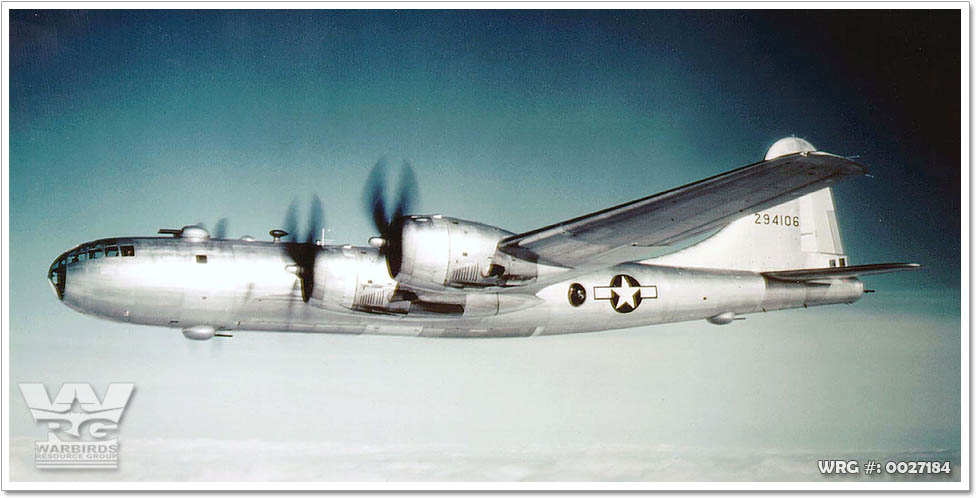U.S.A.A.F. RESOURCE CENTER > BOMBERS > SUPERFORTRESS > PREVIOUS PAGE

B-29A-30-BN Superfortress/42-94106 on a long-range mission in 1945.
[Source: USAAF Photo]
Because of the B-29's advanced design, unlike many other World War II-era bombers, the Superfortress remained in service long after the war ended, with a few even being employed as flying television transmitters for the Stratovision company. The B-29 served in various roles throughout the 1950s. The Royal Air Force flew the B-29 as the Washington until phasing out the type in 1954. The Soviet Union produced an unlicensed reverse-engineered copy as the Tupolev Tu-4. The B-29 was the progenitor of a series of Boeing-built bombers, transports, tankers, reconnaissance aircraft and trainers including the B-50 Superfortress (the first aircraft to fly around the world non-stop) which was essentially a re-engined B-29. The type was retired in the early 1960s. The B-29 production total was 3,970 aircraft. Dozens of B-29s remain as static displays but only two examples, Fifi and Doc, have been restored to flying status; with Doc flying again for the first time from McConnell AFB on July 17, 2016.
A transport developed from the B-29 was the Boeing C-97 Stratofreighter, first flown in 1944, followed by its commercial airliner variant, the Boeing Model 377 Stratocruiser in 1947. This bomber-to-airliner derivation was similar to the B-17/Model 307 evolution. In 1948 Boeing introduced a tanker variant of the B-29 as the KB-29, followed by the Model 377-derivative KC-97 introduced in 1950. A heavily modified line of outsized-cargo variants of the Stratocruiser is the Guppy / Mini Guppy / Super Guppy which remain in service today with operators including NASA.
|
– Design & Development – Operational History – Operators – Specifications |
– Variants – Gallery – Survivors |
Sources:
Gunston, Bill - The Encyclodepia of the Worlds Combat aircraft, 1976, Chartwell Books, Inc., New York
U.S.A.A.F. RESOURCE CENTER > BOMBERS > SUPERFORTRESS > PREVIOUS PAGE
